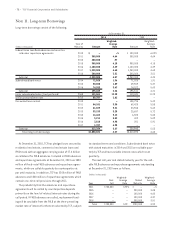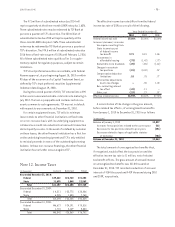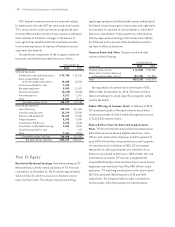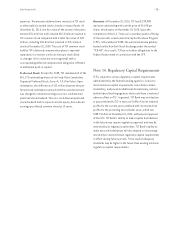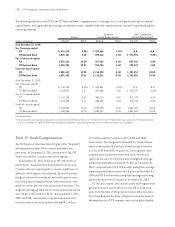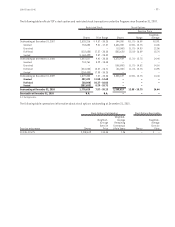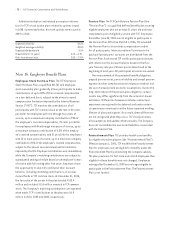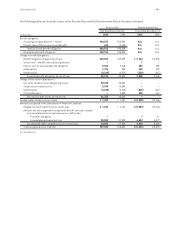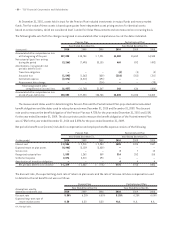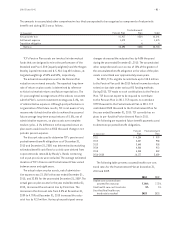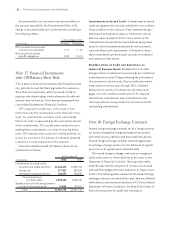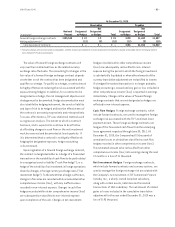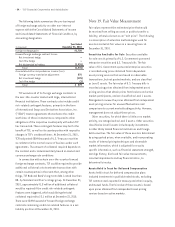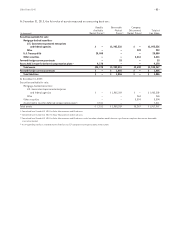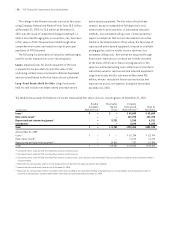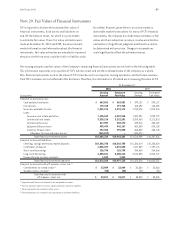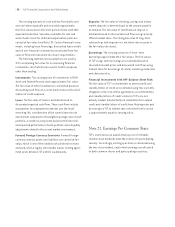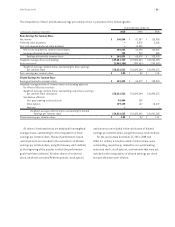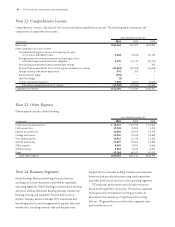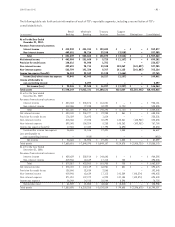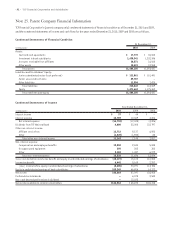TCF Bank 2010 Annual Report Download - page 98
Download and view the complete annual report
Please find page 98 of the 2010 TCF Bank annual report below. You can navigate through the pages in the report by either clicking on the pages listed below, or by using the keyword search tool below to find specific information within the annual report.
• 82 • TCF Financial Corporation and Subsidiaries
Assumed health care cost trend rates have an effect on
the amounts reported for the Postretirement Plan. A 1%
change in assumed health care cost trend rates would have
the following effects:
1-Percentage-Point
(In thousands) Increase Decrease
Effect on total of service and
interest cost components $ 17 $ (16)
Effect on postretirement
benefits obligations $410 $(371)
Note 17. Financial Instruments
with Off-Balance Sheet Risk
TCF is a party to financial instruments with off-balance sheet
risk, primarily to meet the financing needs of its customers.
These financial instruments, which are issued or held for
purposes other than trading, involve elements of credit and
interest-rate risk in excess of the amount recognized in the
Consolidated Statements of Financial Condition.
TCF’s exposure to credit loss, in the event of non-
performance by the counterparty to the financial instru-
ment, for commitments to extend credit and standby
letters of credit is represented by the contractual amount
of the commitments. TCF uses the same credit policies in
making these commitments as it does for making direct
loans. TCF evaluates each customer’s creditworthiness on
a case-by-case basis. The amount of collateral obtained
is based on a credit evaluation of the customer.
Financial instruments with off-balance sheet risk are
summarized as follows:
At December 31,
(In thousands) 2010 2009
Commitments to extend credit:
Consumer real estate and other $1,444,619 $1,596,706
Commercial 277,427 336,428
Leasing and equipment finance 148,597 124,898
Total commitments
to extend credit 1,870,643 2,058,032
Standby letters of credit and guarantees
on industrial revenue bonds 31,062 39,281
Total $1,901,705 $2,097,313
Commitments to Extend Credit Commitments to extend
credit are agreements to lend provided there is no violation
of any condition in the contract. These commitments gen-
erally have fixed expiration dates or termination clauses
and may require payment of a fee. Since certain of the
commitments are expected to expire without being drawn
upon, the total commitment amounts do not necessarily
represent future cash requirements. Collateral to secure
these commitments predominantly consists of residential
and commercial real estate.
Standby Letters of Credit and Guarantees on
Industrial Revenue Bonds Standby letters of credit
and guarantees on industrial revenue bonds are conditional
commitments issued by TCF guaranteeing the performance
of a customer to a third-party. These conditional commit-
ments expire in various years through 2015. Collateral
held primarily consists of commercial real estate mort-
gages. Since the conditions under which TCF is required
to fund these commitments may not materialize, the
cash requirements are expected to be less than the total
outstanding commitments.
Note 18. Foreign Exchange Contracts
Forward foreign exchange contracts to sell a foreign currency
are used to manage the foreign exchange risk associated
with certain assets, liabilities and forecasted transactions.
Forward foreign exchange contracts represent agreements
to exchange a foreign currency for U.S. dollars at an agreed-
upon price on an agreed-upon settlement date.
All forward foreign exchange contracts are recognized
within other assets or other liabilities at fair value on the
Statement of Financial Condition. These typically settle
within 30 days with the exception of contracts associated
with cash flow hedges which have maturities as long as seven
months. The following table summarizes the forward foreign
exchange contracts, recorded at fair value, that are reflected
within other assets and other liabilities on TCF’s Consolidated
Statements of Financial Condition. See Note 20 Fair Values of
Financial Instruments for additional information.


